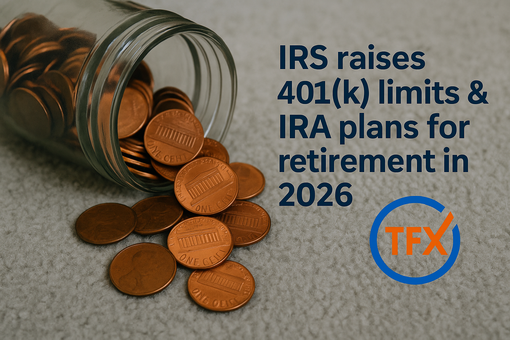Form 1099-INT: What it is, how it works & how to file it
The 1099-INT is a part of the 1099 series of forms issued by the IRS. These forms are used to report various types of non-payroll income, including interest income.
Form 1099-INT is specifically used to report interest income received by an individual or business during the tax year.
It is important for both the payer and the recipient of the interest income to understand the filing requirements and information included on this form.
In this article we will provide a detailed overview of Form 1099-INT, including the information it includes and who is required to file it.
Also read - Why Americans Abroad Should File U.S. Tax Return
What is Form 1099-INT: Interest Income?
Form 1099-INT is used to report interest income received by an individual or business during the tax year. This includes interest received from bank accounts, bonds, and other investments.
The form reports the total amount of interest income received during the year, which is then used to calculate the tax liability of the recipient.
It also includes the recipient's tax identification number, such as a Social Security number, and the payer's identification number, such as an Employer Identification Number (EIN).
Who is required to file Form 1099-INT?
Form 1099-INT specifically reports interest income received by individuals or businesses during the tax year.
But here's the catch - if you're a payer of interest income and you've paid $10 or more to a single recipient during the tax year, you're required to file Form 1099-INT.
And if you're the lucky recipient of interest income, you better report it on your tax return.
NB! Failure to file Form 1099-INT can result in penalties for the payer.
Now, for all you US expats out there, NOTE - even if you earned interest income from a foreign country, you're still required to file Form 1099-INT because, let's face it, the IRS wants a piece of the pie no matter where it comes from.
So don't forget to stay on top of your filing requirements and submit that form in a timely manner, or risk getting hit with some hefty penalties.
Unsure of each piece to be filed?
Get your free tax consultation
What info is included on Form 1099-INT?
Form 1099-INT includes several pieces of information, including:
- Payer's Info: This includes the name and address of the payer, as well as their identification number, such as an Employer Identification Number (EIN).
- Recipient's Info: This includes the name and address of the recipient, as well as their tax identification number, such as a Social Security number.
- Box 1: Interest income received during the tax year, including any federal income tax withheld. This box is used to report the total amount of interest income received during the tax year and is used to calculate the tax liability of the recipient.
- Box 2: Any early withdrawal penalties on the interest income. This box is used to report any penalties assessed for withdrawing funds from a savings account or other investment before a specified date.
- Box 3: Interest on U.S. savings bonds and Treasury obligations.
- Box 4: Federal income tax withheld, if any. This box is used to report any federal income tax that was withheld from the interest income.
- Box 5: Investment expenses, such as management fees, incurred on the interest income. This box is used to report any expenses incurred in the management of the investment, such as management fees.
- Box 6: Foreign tax paid on the interest income. This box is used to report any foreign taxes paid on the interest income.
- Box 7: Tax-exempt interest income, if any. This box is used to report any interest income that is not subject to federal income tax, such as interest earned on certain municipal bonds.
- Box 8: Specified private activity bond interest income, if any. This box is used to report interest earned on specified private activity bonds, which are bonds issued by private entities for specific purposes, such as financing a stadium or housing project.
- Box 9: Bond premium on Treasury obligations, if any. This box is used to report any bond premium on Treasury obligations, which is the amount by which the purchase price of a bond exceeds its face value.
- Box 10: Market discount on bonds, if any. This box is used to report any market discount on bonds, which is the difference between the purchase price of a bond and its redemption value.
NOTE! Not all of these boxes may apply to every Form 1099-INT and some may be left blank. Also, there may be additional boxes for state or local tax information. However, these are the most common boxes found on the form.
Form 1099-INT preview
How Form 1099-INT works
Form 1099-INT is used to report interest income received by an individual or business during the tax year.
Payers of interest income are typically required to file Form 1099-INT if they have paid $10 or more in interest to a single recipient during the tax year. This includes banks, businesses, and other organizations that pay interest.
Recipients of interest income are also required to report the income on their tax return.
The form includes information such as the payer's and recipient's name, address, and identification numbers, as well as the total amount of interest income received and any federal income tax withheld.
The form also includes boxes for reporting any early withdrawal penalties, foreign taxes paid, tax-exempt interest, and other information as applicable.
How to file Form 1099-INT
Form 1099-INT should be filed by the payer of the interest income to the IRS and a copy should be provided to the recipient by January 31st of the year following the tax year.
Payers can file Form 1099-INT electronically or by paper. The recipient will then use the information provided on the form to report the interest income on their tax return.
It's important for both the payer and the recipient to ensure that the information provided on Form 1099-INT is accurate and to file the form in a timely manner to avoid any penalties.
What if I have problems with my Form 1099-INT?
If you're having problems with your Form 1099-INT, there are a few steps you can take to resolve the issue:
- First, check for errors on the form. Common mistakes include incorrect taxpayer identification numbers, incorrect spelling of names, and incorrect dollar amounts. If you find errors, contact the issuer of the form and request a corrected version.
- If you haven't received your Form 1099-INT and it's nearing the tax filing deadline, contact the issuer to inquire about the status of the form. They may be able to provide you with a copy or let you know when it will be sent.
- If the form is lost or destroyed, you may need to request a duplicate copy from the issuer.
- If the form is not received or lost, and you are unable to get the form, you may still need to report the income on your tax return using other documents such as bank statements, you should consult an expat tax pro for more guidance.
As a team of tax experts, Taxes for Expats can provide you with the guidance and expertise you need to ensure your Form 1099-INT is accurate and filed correctly, and help you to avoid any potential penalties or delays in filing your tax return.
Never had a pro tax help before?
Check out how it works
FAQ
Yes, you need to report interest income from a 1099-INT on your tax return.
The IRS sends a 1099-INT to individuals or businesses with interest income from a bank or financial institution to track income and ensure accurate tax payments.
If you received $10 or more in interest income, you'll likely receive a 1099-INT from the paying bank or financial institution.
Failing to report income from a 1099-INT can result in penalties and fines from the IRS.
Yes, the interest income reported on a 1099-INT is considered taxable income and should be included in your tax return.


